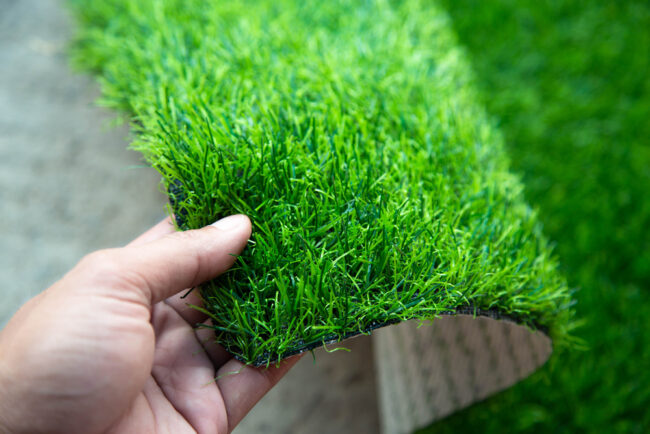
Hey there, decor enthusiasts! If you’ve been scrolling through Instagram or flipping through home design magazines lately, you’ve probably noticed a certain trend taking over modern interiors: artificial greenery. Yep, those lush, vibrant plants that look so real you’d swear they need watering—but don’t! Fake plants, artificial succulents, and faux vines are having a major moment, and I’m here to spill all the details on why they’re the hottest decor choice right now. In this blog, we’ll dive into the rise of faux greenery, its benefits, styling tips, and how to make it work in your space. So, grab a coffee, and let’s get into it!
Why Faux Greenery Is Taking Over
Let’s be real—live plants are gorgeous, but they’re also high-maintenance. Between watering schedules, finding the perfect light, and praying your cat doesn’t turn your fiddle leaf fig into a chew toy, keeping real plants alive can feel like a full-time job. Enter faux greenery, the low-maintenance hero of modern interior design.
The popularity of faux plants has skyrocketed in recent years, and it’s not hard to see why. Advances in manufacturing have made artificial plants look incredibly lifelike. We’re talking textured leaves, realistic color gradients, and even those little imperfections that mimic nature. Plus, they’re versatile, affordable, and perfect for anyone who loves the look of greenery but doesn’t have the time (or green thumb) to care for real plants.
Faux greenery also fits perfectly into the modern aesthetic. Today’s interior design trends lean toward minimalism, biophilia (that’s the fancy term for bringing nature indoors), and sustainability. Fake floor plants check all those boxes. They add a touch of nature without the upkeep, and many are made from durable, eco-friendly materials that last for years. It’s no wonder designers and homeowners alike are obsessed!
The Benefits of Going Faux
So, why should you consider faux greenery for your home? Let’s break down the perks.
1. Zero Maintenance, All the Vibes
Unlike real plants, faux greenery doesn’t need water, sunlight, or pruning. You can plop a faux monstera in a shady corner of your living room, and it’ll look fabulous forever. No wilting, no yellowing leaves, no guilt trips when you forget to water it for a month. It’s the ultimate set-it-and-forget-it decor.
2. Budget-Friendly Beauty
High-quality artificial plants are often a one-time investment. While a real plant might need replacing if it doesn’t survive your less-than-stellar plant-parenting skills, a faux plant will stay vibrant for years. Plus, you can find options at every price point, from budget-friendly picks at big-box stores to luxe, hyper-realistic pieces from specialty retailers.
3. Allergy-Friendly
If you love the look of plants but sneeze your way through spring, faux greenery is a game-changer. No pollen, no mold, no problem. You get all the visual benefits of plants without the sniffles.
4. Endless Versatility
Faux plants come in every shape, size, and style imaginable. From towering faux palms to dainty succulents, there’s something for every aesthetic. You can also place them anywhere—dark bathrooms, windowless offices, or high shelves where real plants would struggle. And if you want to switch things up? Just move them around without worrying about their “preferred conditions.”
5. Sustainability Factor
Okay, I know what you’re thinking—plastic plants aren’t exactly eco-friendly, right? Well, many brands are stepping up their game, using recycled materials or sustainable production methods. Plus, since faux plants last forever, you’re not constantly replacing dead plants, which reduces waste in the long run.
How to Style Faux Greenery Like a Pro
Now that you’re sold on the idea of faux greenery, let’s talk about how to make it look amazing in your space. The key is to style them thoughtfully so they don’t scream “fake!” Here are some tips to nail the look.
Mix and Match Textures
One of the easiest ways to make faux greenery look real is to mix different types of plants and textures. Pair a sleek, glossy faux monstera with a fuzzy faux fern or a spiky faux cactus. This variety mimics the diversity you’d find in nature and keeps things visually interesting. For example, try grouping a tall faux fiddle leaf fig with a trailing pothos and a few small succulents on a shelf for a lush, layered effect.
Choose the Right Pot
The pot you choose can make or break the look. Ditch those cheap plastic pots that sometimes come with faux plants and opt for something chic—think ceramic, terracotta, or woven baskets. A stylish pot instantly elevates your faux greenery and makes it look like you spent way more than you did. Pro tip: Add some decorative rocks or moss around the base to hide the “stem” and give it a more natural vibe.
Play with Scale
Don’t be afraid to go big! A large faux floor plant, like a bird of paradise or a rubber plant, can make a bold statement in a living room or entryway. On the flip side, small faux plants are perfect for bookshelves, coffee tables, or even bathroom counters. Mixing scales creates a dynamic look that feels curated rather than cookie-cutter.
Incorporate Faux Greenery in Unexpected Places
Think beyond the usual potted plant. Faux greenery can be used in creative ways to add a pop of nature to any space. Try a faux eucalyptus garland draped over a headboard, a wall-mounted faux fern in a bathroom, or a faux ivy vine cascading down a bookshelf. These unexpected touches add personality and make your space feel fresh and inviting.
Blend with Real Elements
If you’re worried about your faux plants looking too perfect, mix them with real elements. For example, place a faux plant next to a vase of fresh-cut flowers or incorporate natural materials like wood or stone into your decor. This combo tricks the eye into believing everything is real.
Where to Use Faux Greenery in Your Home
Faux greenery works in every room of the house—seriously! Here are some ideas to get you started.
Living Room
The living room is the perfect place to go big with faux greenery. A tall faux palm or fiddle leaf fig in a corner adds height and drama, while a cluster of smaller plants on a coffee table or shelf creates a cozy, inviting vibe. Try a faux monstera in a woven basket for that boho-chic look that’s all over Pinterest.
Bedroom
In the bedroom, faux greenery can create a calming, spa-like atmosphere. A faux pothos trailing over a nightstand or a faux lavender plant on a dresser adds a touch of serenity without the upkeep. You can even hang a faux eucalyptus wreath above your bed for a dreamy, romantic vibe.
Bathroom
Bathrooms are notoriously tough for real plants because of low light and high humidity. Faux plants are the perfect solution. A faux fern or aloe plant on a vanity or a hanging faux ivy near the shower can make your bathroom feel like a lush oasis.
Kitchen
Kitchens often lack space for decor, but faux greenery can squeeze into even the tiniest corners. A faux herb garden on a windowsill or a small potted faux basil on the counter adds a fresh, farm-to-table vibe without the hassle of growing actual herbs.
Office or Workspace
Whether you’re working from home or sprucing up a cubicle, faux greenery can make your workspace feel more inspiring. A faux succulent or cactus on your desk adds a pop of color without taking up too much space, and a faux snake plant in a corner can brighten up a dreary office.
Common Mistakes to Avoid
While faux greenery is pretty foolproof, there are a few pitfalls to watch out for.
Overdoing It
Too much faux greenery can make your space look like a plastic jungle. Aim for balance—mix your faux plants with other decor elements like books, candles, or artwork to keep things cohesive.
Choosing Cheap-Looking Plants
Not all faux plants are created equal. Avoid ones that look overly shiny or have unnatural colors (neon green, anyone?). Invest in high-quality options with realistic details, even if it means spending a bit more.
Forgetting to Dust
Just because faux plants don’t need water doesn’t mean they’re maintenance-free. Dust can accumulate on leaves, making them look dull and fake. Give them a quick wipe with a damp cloth every few months to keep them looking fresh.
Where to Shop for Faux Greenery
Ready to jump on the faux greenery bandwagon? You’re in luck—there are tons of places to shop for high-quality artificial plants. Big retailers like Target, IKEA, and Amazon have affordable options that don’t skimp on style. For more premium picks, check out brands like West Elm, Pottery Barn, or The Sill, which offer hyper-realistic faux plants that could fool even the most discerning plant parent. Local home decor stores and even thrift shops can also be treasure troves for unique finds.
Final Thoughts
Faux greenery is more than just a trend—it’s a practical, stylish way to bring the beauty of nature into your home without the hassle. Whether you’re a busy professional, a self-proclaimed plant killer, or just someone who loves a low-maintenance vibe, faux plants offer endless possibilities to elevate your space. From lush floor plants to delicate tabletop succulents, there’s a faux green for every style and room.
So, what are you waiting for? Start experimenting with faux greenery and watch your home transform into a verdant paradise. Have a favorite faux plant or styling tip? Drop it in the comments—I’d love to hear how you’re rocking this trend!
